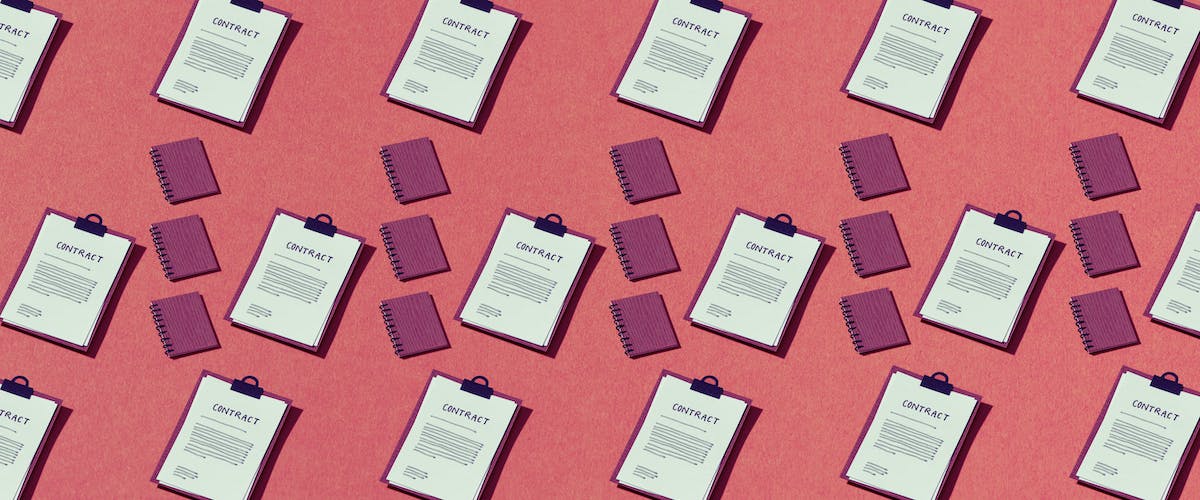A guide to B2B marketplace payments: Four major challenges and how to solve them
B2B eCommerce is not typically synonymous with user-friendly. In fact, it’s usually far from it. But B2B buyers still demand all of the same things they get as private customers. Here's how you can make B2B marketplace payments your competitive advantage.
Published on
Last updated on

The marketplace payment experience we know as consumers doesn’t exist in the B2B world.
It’s not because merchants don’t want something better for their customers. The business process is just more complex than in B2C. The complexities present a challenge and an opportunity for marketplaces. By offering a smooth B2B marketplace payment experience, you can remove a major bottleneck from your users' lives.
In this guest post, Balance's Head of Content Natalia Dinsmore explains how you can make your payment experience your competitive advantage by solving four common challenges in B2B marketplace payments. Balance is an expert on the topic – it offers the first online checkout built specifically for B2B marketplaces and merchants.
B2B eCommerce is not typically synonymous with user-friendly. In fact, it’s usually far from it. Complex pricing, ordering tracking, inventory management — there are a lot of hoops to jump through to start selling online.
With more products (sometimes 100k, 250k) and larger order values, it’s not an easy task to make the online experience seamless. But B2B buyers still demand the same things they get as private customers.
Customers want what they love about consumer shopping – order status, shipping information, and invoicing. Plus, they want to be able to pay with terms and with whatever payment method they like. The problem is that most B2B companies depend on legacy systems that offer limited product information and e-commerce functionality.
By 2025 Gartner expects 80% of B2B sales interactions between suppliers and buyers to occur in digital channels. If B2B marketplaces can create an online experience that encourages buyers to purchase and vendors to sell more, the opportunity is two-fold.
First of all, marketplaces can grow their margins by monetizing every transaction that goes through their platform. Then, over time, as buyers and vendors transact more, marketplaces can drive loyalty and build a strong customer base by providing a frictionless, seamless payments experience.
The question is: how do you get there? To answer that, we’ve outlined four major payment challenges B2B marketplaces are up against, and you can overcome them.
For buyers to want to purchase on a B2B marketplace, it's all about making it seamless and easy. On this front, marketplaces should first consider how they let buyers pay how they want.
When it comes to payment options, a lot of B2B marketplaces are limited in what they can offer. Payment processors often only support one or two payment methods. If they do provide more options, they usually charge high processing fees.
But buyers need flexibility. In B2B, businesses may have different internal or industry-specific requirements for how they want to place their payment. Depending on the value of the transaction, internal account receivable /payable team processes, and cash flow constraints – buyers want to be able to choose how to pay for their goods.
Industry expertise helps you solve the challenge and make sure your marketplace offers the payment methods your specific customers are comfortable with.
For low-value transactions, paying with a credit card can be enough. But when it comes to larger order values, ACH (Automated Clearing House) is much cheaper than credit cards. For example, for a $500 purchase, credit card fees can be more than 3x higher than ACH.
Checks have the benefit that they can help extend time to payment. Since the money is not automatically pulled from the business's account the way that wire transfers are, for example, checks can help give an extra cushion around cash constraints.
Ultimately, each payment method has its pros and cons. Being forced to pay with one over the other can have a huge impact on a buyer's budget, timelines, and risk exposure. So offering payment flexibility can be the difference between business and a lost sale.
The next thing that B2B marketplaces need to consider is financing, also known as trade credit or net terms. Trade credit is an agreement that lets a customer purchase goods without paying cash up-front and paying the supplier at a later date. It’s a standard in B2B because of how high the value of goods can be. If a business needs to pay $10,000 for a steel part, most company credit cards won’t cover such a high value.
The issue with trade credit is that buyers often need to go through a slow and tedious approval process. If it takes too long to get approved, buyers will simply go somewhere else.
Why can’t trade credit be as instant and seamless as “By Now, Pay Later” financing solutions in B2C? It can be, but it takes strong technology to determine a buyer’s creditworthiness.
This is even more challenging in a marketplace where buyers want to be able to buy from multiple vendors at once. While in B2C purchases, transactions are often smaller and amount to high values over time, in B2B, one transaction can be worth hundreds of B2C transactions. This means that merchants need to be able to cover large values upfront.
To solve this challenge, marketplaces can look to a bank or a financing solution to fund the transaction. The problem is that a lot of these solutions offer a less-than-ideal experience for your customers. For example, if a financing entity is only looking at a buyer’s credit history, it doesn’t give the full picture to the financial health of the business.
Offering multiple ways to qualify, like through bank linking, can be a better approach. Bank linking through providers like Plaid allows customers to connect their financial accounts securely. In this way, you can access their transaction history, account holder information, and account balances. Why is this important? A new business might lack a strong credit history, but its banking information might show signs of high growth potential. A short application with details like business name, EIN, and business address is another way to introduce minimal friction while still evaluating the financial health of your buyers.
Applying these qualification methods across all of your buyers, instead of sending them through a lengthy approvals process each time they want to transact, can maximize approvals and lead more customers to purchase.
Even in a scenario where you can process transactions for your buyers or handle financing, one of the biggest hassles for B2B marketplaces is settling payments. This involves collecting the funds and ensuring that each party receives the correct and full amount.
On a small scale, you can probably manage outstanding invoices. However, keeping track of which buyers paid, while processing different payment methods can be a real headache when you’re dealing with a high number of transactions. It can also really slow down operations and cause friction in the collections process.
The vendor side of things isn’t any easier. Making sure that each vendor gets paid at the right time for the right amount, regardless of the payment method, across hundreds or thousands of transactions, can be overwhelming.
Why is this so important? Vendors want guaranteed and on-time payment. They typically deal with offline inefficiencies that negatively impact their business. From managing collections to late payments, vendors have to put up with a lot of hassle just to get paid. Be the platform that removes that friction – and that’s value they can’t turn down.
A big reason why vendors would want to go to a marketplace is to be relieved of dealing with the transaction. But if the result is that vendors have to wait weeks or months to get paid by your marketplace, they’ll likely take their business elsewhere. This is why vendor payout is so important. B2B marketplaces need to allow parties to know exactly what is happening with the transaction - while eliminating any delays in payment.
Both in the B2B and B2C world, marketplaces need to facilitate multi-sided transactions.
The tricky thing about a multi-sided transaction flow is not just meeting the needs of both buyers and sellers but also keeping marketplaces out of the flow of funds. Since, from a compliance perspective, B2B marketplaces are not banks or payment providers, they can't be the ones to collect payments and distribute funds.
Services like escrow can help marketplaces manage compliance issues. Escrow is when an independent 3rd party holds funds until certain conditions are satisfied. In essence, it's a failsafe. And it's not the only approach to compliance.
The best payment experience is one where you can accommodate buyers' payment schedules while also paying out vendors quickly. With 3rd party escrow payment services, there are two downsides for marketplace customers: buyers have to make the payment immediately, and vendors only get the funds once the goods are delivered.
In other words, escrow helps provide trust between the vendor and buyer, but it doesn't offer the convenience of net terms. Net terms allow customers to delay payment of their invoice, typically for 30, 60, or 90 days. With net terms, the marketplace gets to set the payment conditions for the buyers, but it offers them more flexibility. On the vendor side, you want a solution that doesn't leave them strapped for cash waiting until the funds are released from escrow.
KYC processes offered by B2B payment providers are better suited for greater functionality while still ensuring your marketplace is compliant. The benefit of a payment platform is that they rely on sophisticated account verification methods. This can include, among other things, information about the legal entity and personal information about the business.
All of this is to say that B2B marketplaces should lean on strong payment platforms that can take on compliance liability while offering the best value to customers.
With B2B e-commerce still in its infancy, it's no wonder that payments are still a big question mark. But they don't have to be.
B2B buyers expect financing, flexible terms, and payment options. Suppliers, on the other hand, need guaranteed and on-time payment to protect cash flow. Even with these sophisticated needs, the right payment experience can maximize the success of your marketplace.
Integrating with a payment service provider specializing in marketplace payments helps you ensure smooth, compliant payment traffic. Payment providers like Balance help solve B2B marketplace payment challenges. There are also a number of other marketplace payment providers that might be right for you depending on your business needs, business model, and industry.
But whichever payment provider you choose, the key is understanding the unique requirements of the industry you're targeting. While the world of B2B transactions is complex, it also presents your marketplace with a unique opportunity to solve a big pain point in your customers' lives.
You may also like...

Online marketplace design: the 5 principles of a great marketplace UX
Five key online marketplace design principles and tons of practical tips and examples. Courtesy of marketplace UX designer Fiona Burns.

DAC7: What the new EU tax directive means for online marketplaces
The tax directive DAC7 extends EU tax transparency rules to online marketplaces and requires reporting seller data to tax authorities. In this article, we share what DAC7 is about and how it affects online marketplaces.

How to prevent marketplace leakage (and keep payments on your platform)
How to solve the most daunting challenge of the marketplace business model: platform leakage.

Investor Josh Breinlinger on why investors love B2B marketplaces
Thinking of building a B2B marketplace? Watch Josh Breinlinger’s interview for some tactical advice.
Start your 14-day free trial
Create a marketplace today!
- Launch quickly, without coding
- Extend infinitely
- Scale to any size
No credit card required
